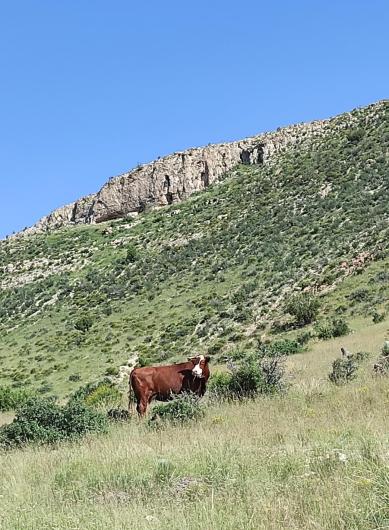McGregor Range Grazing Contracts
Military use on McGregor Range by the U.S. Department of the Army first occurred in 1948. The U.S. Army began purchasing private land within and adjacent to McGregor Range in the mid 1950’s. Public land on McGregor Range has been withdrawn for use by the U.S. Army as a missile testing range since 1957 (Public Land Order No. 1470) (Public Law [PL] 94-579) (PL 85-337) (PL 99-606). In 1999, Congress passed the Military Withdrawal Act (PL 106-65) which withdrew large tracts of public land, including McGregor Range, for military purposes for a period of 20 years. These military withdrawals have made approximately 608,385 acres available to the U.S. Army for training and weapons testing. PL 106-65 directed the BLM to manage the withdrawn public land within McGregor Range and continue livestock grazing consistent with military training priorities.
The BLM currently manages 14 existing grazing units, which consists of approximately 271,000 acres. These 14 grazing units range in size from 13 to 50 sections (8,320 to 32,000 acres) with an average overall carrying capacity of 3,000 head. The stocking rate for each grazing unit varies from 100 to 500 head of cattle. Stocking levels and season of use are determined by monitoring and vary by grazing unit and annual forage condition. The elevation within the grazing units ranges from 4,000 to 7,200 feet. There are three distinct zones within the grazing units, the Tularosa Basin, Otero Mesa, and Sacramento foothills.
The Tularosa Basin is located in the lower elevation. Much of the vegetation in this area consists of mesquite, creosote, four-wing salt bush, sand sage, sand drop seed, tobosa and annual forbs. The Otero Mesa is located in the mid elevation of the grazing unit. Vegetation in this area consists of yucca, winterfat, scattered patches of creosote, blue grama, black grama, sideoats, tobosa, dropseeds, sacaton and annual forbs. The Sacramento foothills are located in the upper elevations of the grazing units. The vegetation in this area consists of juniper, pinion, oak, mountain mahogany, Apache plume, blue grama, black grama, dropseed, western winter wheat and annual forbs.
Contracts for cattle grazing on McGregor Range are awarded each year via competitive bidding at public auction under the provisions of the Federal Material Disposal Act of 1947, as amended. During drought periods, grazing contracts for some or all grazing units may not be offered to ensure attainment of the New Mexico Public Land Health Standards.
In early August each year, the BLM will issue a proposed list of grazing units offered with grazing periods ranging from 9 to 36 months.

